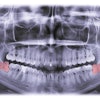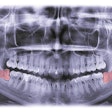
A recent study showed a statistically significant increase in relative risk and absolute risk of cardiovascular death with the outpatient use of azithromycin when compared with the use of amoxicillin (an antibiotic not known to increase cardiovascular events) within a five-day window after exposure (Zaroff et al, JAMA Network Open, June 17, 2020).
 Tom Viola, RPh.
Tom Viola, RPh.Interestingly, the researchers found an increased risk of cardiovascular death within five days of exposure but not within six to 10 days. Also, they found an increased risk of noncardiovascular and all-cause death within five days of exposure to azithromycin.
The results of this study are of particular concern in dentistry. The use of local anesthetics, both with and without epinephrine, may increase the risk of cardiovascular events in predisposed patients. In addition, the use of amoxicillin as a "first-line" agent and azithromycin as a "second-line" agent in dentistry for the treatment of infection and prophylaxis of infective endocarditis is well established.
Azithromycin, a macrolide (along with erythromycin and clarithromycin), is one of the most commonly prescribed antibiotics in the U.S., with an estimated 44.9 million prescriptions dispensed to outpatients in 2016.
Reports of an association of macrolides with QT interval prolongation and cardiac arrhythmias first appeared more than 20 years ago. Most of the case reports involved patients who were at increased risk for cardiac arrhythmias, including underlying cardiac disease, metabolic anomalies that increase the risk of arrhythmia, or concomitant use of other medications known to prolong the QT interval.
The relative safety of azithromycin was first questioned following a study published in 2012, which reported an association between azithromycin use and sudden cardiac death. At that time, the U.S. Food and Drug Administration (FDA) made changes to product information advising against the use of azithromycin in patients with known risk factors for ventricular arrhythmia, due to concern over QT prolongation and reports of cardiac deaths.
This recent retrospective cohort study included two community-based integrated care delivery systems that captured encounters and prescriptions from January 1, 1998, to December 31, 2014. Data were included for 7.8 million antibiotic exposures (22.2% and 77.8% azithromycin and amoxicillin, respectively) among 2.9 million unique individuals. The study included patients ages 30 to 74 years who had at least 12 months of health plan enrollment prior to antibiotic exposure. The risk of cardiovascular death associated with azithromycin versus amoxicillin exposure was calculated after controlling for confounding factors using a propensity score.
The authors indicated that while the risk of cardiovascular death is consistent with proposed mechanisms, the increased risk of noncardiovascular mortality is not. The authors stated that "causality could not be established, particularly for noncardiovascular death, owing to the likelihood of residual confounding." However, "prescribers should be aware of this potential association," they added.
Tom Viola, RPh, is a clinical educator, professional speaker, and published author in the areas of oral pharmacology and local anesthesia. For more information on this and other pharmacology topics, as well as a list of dates and locations where you can attend his latest seminars, visit his website at www.tomviola.com.
The comments and observations expressed herein do not necessarily reflect the opinions of DrBicuspid.com, nor should they be construed as an endorsement or admonishment of any particular idea, vendor, or organization.


















